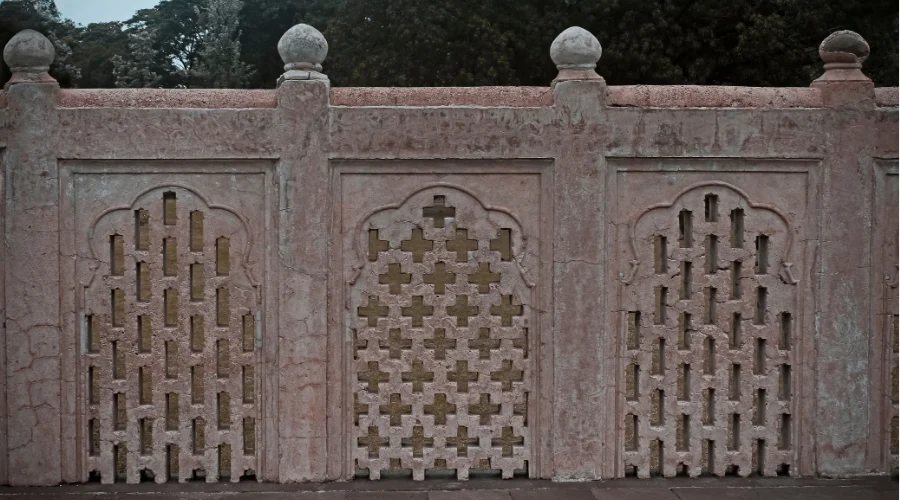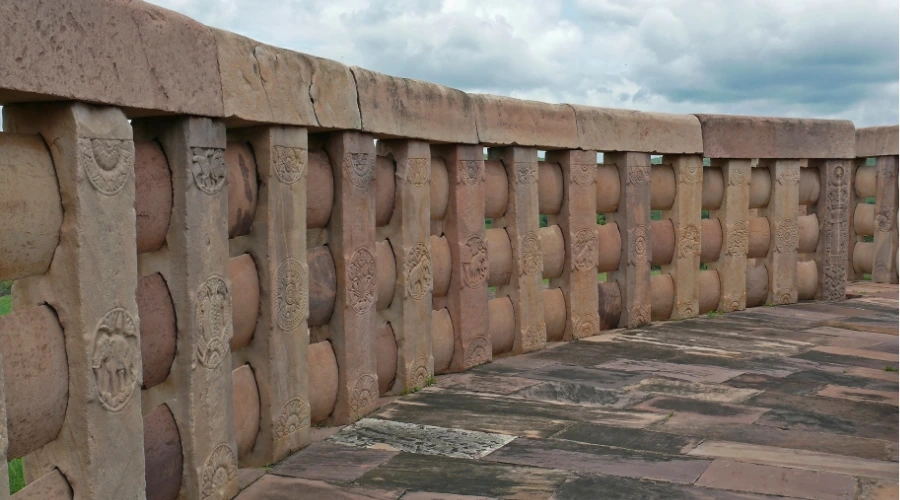Benefits of a Simple Compound Wall Design
Cost efficiency
Simple compound walls basically only need a few materials and also less labour cost. This can reduce the overall costs of construction. This makes them an economical choice for the owners of property who are looking to secure their area without financial burdens.
Easy construction
The nature of the simple designs makes them easy to build easily. Few complications mean fewer mistakes.
Low maintenance
They are minimalistic in nature. This makes them easier to maintain. Thus this reduces the maintenance costs.
Aesthetic appeal
The minimalistic designs can be visually appealing. They give a clean and modern look. Simple designs can blend into different architectural styles. This helps in increasing the overall appearance of the property.
Types of Simple Compound Wall Designs

Plain Concrete Wall
The pain concrete wall is easy to build and durable. This type of compound wall gives a modern and sleek look. It can be left as it is or it can also be painted or changed according to the exterior of the property.
Brick Wall
The brick walls are classic and they give excellent security. They can be built in different patterns like English bonds or stretcher bonds. They add a subtle design element and also maintain simplicity.
Stone Wall
stone compound walls give a rustic look and are robust. Stones of different shapes and sizes can be arranged in a pattern that can provide strength and appeal.
Metal Fencing with Concrete Base
Combining the metal fencing with a concrete base can give security as well as visibility and airflow. This design can be functional and also aesthetically pleasing. They are suitable for modern properties.
Materials Used in Simple Compound Wall Designs
The materials used in simple compound wall designs are concrete, bricks, stone and metals.
- Concretes are versatile materials used for construction purposes. They provide longevity and strength to the walls.
- Bricks are building materials used from ancient times. They are known for their aesthetic appeal and durability. They come in different ranges of sizes, shapes and colours.
- Stones are strong and weather-resistant materials. They are a good choice for compound walls.
- Metals like iron or steel can be used in fencing. This provides a modern look. They are strong and durable. They can be designed into different styles that complement the concrete base.
Design Considerations
Height and Thickness: this determines the needs of security and local building regulations. A normal residential compound varies from 5 to 8 feet in height.
Foundation: this is important for the wall stability. The normal depth must be 2 to 3 feet depending on the type of soil and wall height.
Finishing: the options for finishing include painting, plastering or just about leaving the natural texture of the material as it is. Finishing can increase the appearance of the wall. They also give protection in different weather conditions.
Security Features: adding barbed wire, spikes, or electronic surveillance can be done in the walls.
Steps to Build a Simple Compound Wall

Some steps need to be followed for building compound walls. Planning and designing, laying the foundation, constructing the wall and finishing touches.
Cost Estimation
The cost of building a compound wall can be made by calculating three types of expenses.
Material Costs
The cost of bricks, concrete, stones or metals can be estimated based on the design and dimension of the wall. The costs can differ based on the quality and availability of the material.
Labour Costs
Simple designs need less labour. There will be a low cost when compared to complex designs.
Additional Costs
In this cost, the cost of getting permits, finishing materials and additional security features will be added. It is also good if you can keep a budget for any unforeseen situations.
Conclusion
A simple compound wall design can give various benefits. That includes cost efficiency, easy construction, low maintenance and good looks. By selecting a proper material and design you can create an attractive and durable camping wall. That helps in increasing the security of your property.
FAQs
Concrete, bricks, stones, and metals are good choices. This mainly depends on your needs and preferences.
The cost differs based on materials, labour, and design complexity. It will be better to get a detailed estimation from the contractor.
Construction time can differ from a few days to a few weeks. This depends on the size and complexity of the wall.
Cracks, weather damage, and dirt buildup are common issues. This can be managed by maintaining it regularly.

